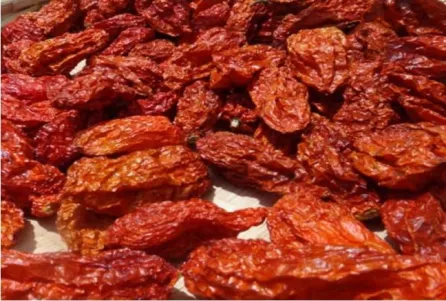Dec . 10, 2024 12:25 Back to list
Exploring Different Varieties of Paprika and Pepper Types in Culinary Uses
A Comprehensive Guide to Paprika Pepper Types
Paprika is more than just a vibrant red spice that adds color and flavor to dishes; it is a symbol of culinary history and culture. Derived from Capsicum annuum, paprika comes in various types, each with its unique flavor profile, color intensity, and culinary uses. To understand paprika fully, one must explore the different types of paprika peppers, their origins, and how they are utilized in cooking.
The Origin and Evolution of Paprika
Paprika traces its roots back to Central America, where indigenous peoples cultivated chili peppers long before European explorers arrived. Upon introduction to Europe in the 15th century, paprika began to evolve. Hungary and Spain became the primary producers of paprika, as both regions adapted the pepper to their climates and culinary traditions. In Hungary, the spice is deeply intertwined with national identity, while in Spain, it is celebrated for its varying levels of heat and flavor.
Types of Paprika Peppers
1. Sweet Paprika Sweet paprika is the most common type found in grocery stores and is characterized by its mild flavor and vibrant red color. It is made from capsicum peppers that are dried and ground, resulting in a bright spice that is ideal for seasoning dishes without overpowering them. Sweet paprika is essential in Hungarian dishes like goulash and is often used as a garnish for deviled eggs.
2. Smoked Paprika (Pimentón) Originating from Spain, smoked paprika (or pimentón) adds a rich, smoky depth to various dishes. The peppers are roasted over an oak fire before being ground, which imparts a unique flavor reminiscent of bacon or barbecue. It comes in three varieties sweet, bittersweet, and hot. Smoked paprika is a key ingredient in many Spanish recipes, such as chorizo, paella, and various tapas.
3. Hot Paprika Perfect for those who enjoy a spicy kick, hot paprika is made from ripe, spicy capsicum peppers. It packs more heat than its sweet counterpart and can vary significantly in intensity. This type of paprika is commonly used in both Hungarian and Spanish cuisines, often added to dishes like stews and marinades for an extra punch.
odm paprika pepper types

4. Hungarian Paprika Hungarian paprika is known for its rich flavor and vibrant color, making it a staple in Hungarian kitchens. The spice is available in various grades, including delicate, sweet, and hot, allowing chefs to choose the right flavor intensity for their dishes. It is often used in traditional meals like chicken paprikash and pörkölt (a type of stew).
5. Cayenne Pepper While technically different from paprika, cayenne is often grouped with similar spices due to its heat. Made from dried and ground cayenne peppers, this spice is much hotter than any paprika varieties. It is commonly used in dishes that require a significant amount of heat.
Culinary Uses of Paprika
Paprika is incredibly versatile and can be used in a wide array of dishes. It can be sprinkled atop deviled eggs, incorporated into sauces, or used as a seasoning for roasted vegetables and meats. Beyond savory applications, paprikas can also enhance the color and taste of soups and stews, making them more visually appealing and flavorful.
One notable use of paprika is in the famous dish, Hungarian goulash, where it acts as the main flavoring agent. Its rich, red hue not only imparts warmth to the meal but also serves as an inviting presentation. Similarly, in Spanish cuisine, smoked paprika is a must-have for dishes like patatas bravas and pisto, a ratatouille-like dish.
Conclusion
Understanding the different types of paprika peppers can open up new culinary avenues for any cooking enthusiast. Each type offers a unique flavor and use, from the sweet and mild to the hot and spicy. By incorporating these vibrant spices into your cooking, you can elevate your dishes and pay homage to the rich traditions they represent. Whether you are making a simple salad dressing or a complex stew, paprika adds both depth and color, making it a beloved ingredient in kitchens around the world.

